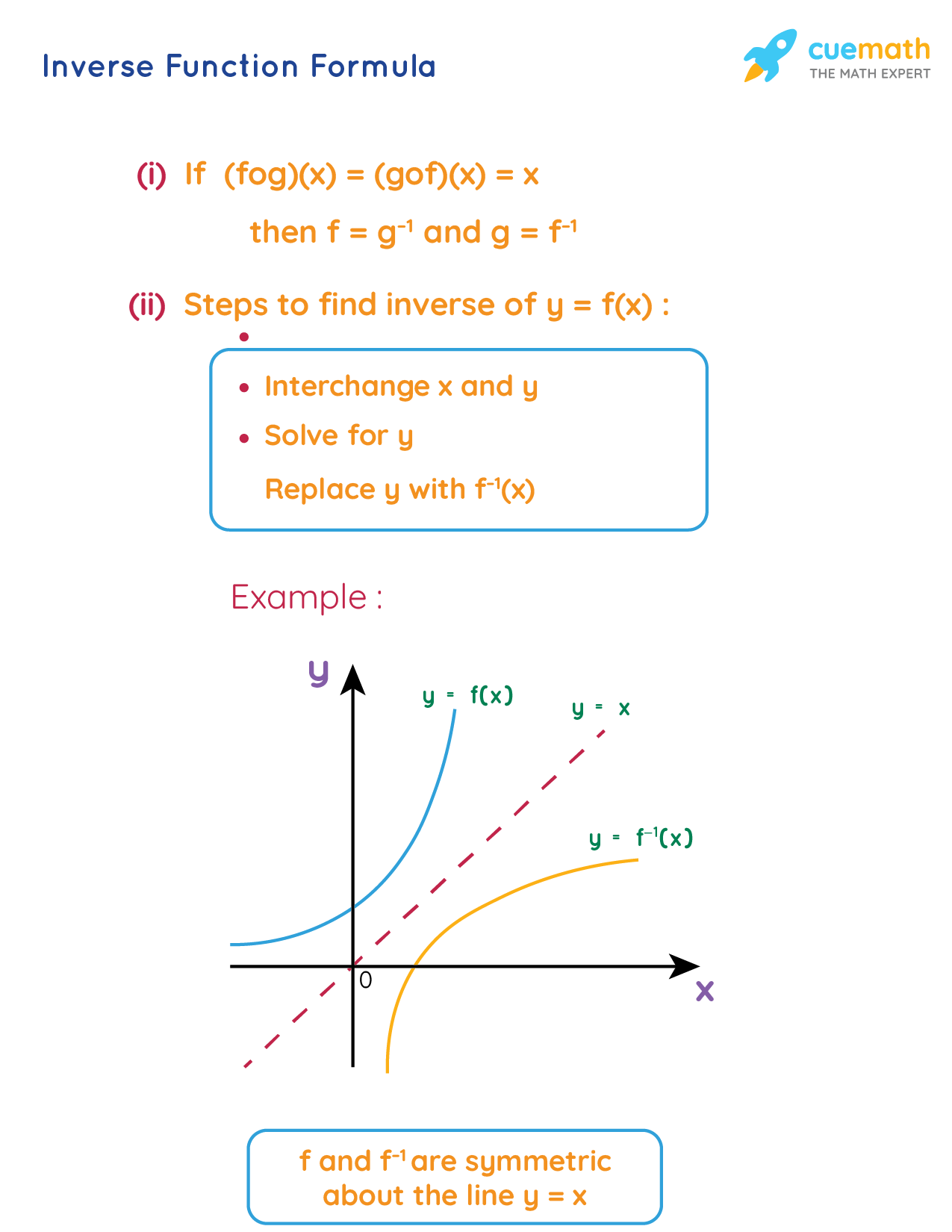Inverse Function Formula
Before learning the inverse function formula, let us recall what is an inverse function. If the composition of two functions results in an identity function (I(x) = x), then the two functions are said to be inverses of each other. The inverse of a function f is denoted by f-1 and it exists only when f is both one-one and onto function. Note that f-1 is NOT the reciprocal of f. Let us learn the inverse function formula in the upcoming sections.

What Is the Inverse Function Formula?
If (x, y) is a point on the graph of a function f, then (y, x) will be definitely a point on f-1, i.e., the domain of f is the range of f-1 and the range of f is the domain of f-1,i.e., if f : A → B (which is one-one and onto), then f-1: B → A. The inverse function formula says f and f-1 are inverses of each other only if their composition is x.
(f o f-1) (x) = (f-1 o f) (x) = x
Steps to Find the Inverse Function
Here are the steps to find the inverse of a function y = f(x).
- Interchange x and y.
- Solve for y.
- Replace y with f-1(x).
Identifying Inverse Functions From a Graph
If the graphs of two functions are given, we can identify whether they are inverses of each other. If the graphs of both functions are symmetric with respect to the line y = x, then we say that the two functions are inverses of each other. This is because of the fact that if (x, y) lies on the function, then (y, x) lies on its inverse function.

Let us see some applications of the inverse function formula in the solved examples section.
Solved Examples Using Inverse Function Formula
-
Example 1: Verify whether f(x) = 3x + 2 and g(x) = (x - 2) /3 are inverses of each other using the inverse function formula.
Solution:
We will verify whether (f o g)(x) = (g o f)(x) = x.
(f o g)(x) = f (g(x))
= f ((x-2)/3)
= 3 ((x-2)/3) + 2
= x - 2 + 2
= x
(g o f)(x) = g (f(x))
= g (3x + 2)
= (3x + 2 - 2)/3
= 3x/3
= x
We proved that (f o g)(x) = (g o f)(x) = x.
By inverse function formula, f and g are inverses of each other.
Answer: We proved that f = g-1 and g = f-1.
-
Example 2 : Find the inverse of the function f(x) = \( \dfrac{2x+1}{x+1}\).
Solution:
We will use the inverse function formula (or steps to find the inverse function).
The given function is:
y = \( \dfrac{2x+1}{x+1}\)
Interchange x and y.
x = \( \dfrac{2y+1}{y+1}\)
Now we will solve this for y.
Multiplying both sides by (y + 1),
x (y + 1) = 2y + 1
xy + x = 2y + 1
xy - 2y = 1 - x
y (x - 2) = 1 - x
y = \(\dfrac{1-x}{x-2}\)
Replace y with f-1(x).
f-1(x) = \(\dfrac{1-x}{x-2}\)
Answer: f-1(x) = \(\dfrac{1-x}{x-2}\).
visual curriculum
